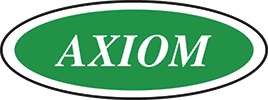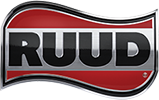The on-again, off-again tariff situation has consumers and businesses wondering what it all means in terms of pricing, products and materials for a variety of industries, including HVAC and plumbing. The tariff war is changing with every passing day, so it’s difficult to give a definitive answer to this question. Will prices go up? Probably. By how much? Still unknown. That’s why savvy pros in HVAC and plumbing are looking at what tariffs mean in general, and what kinds of price fluctuations we can likely expect.
Amid all of the uncertainty, we know one thing is for sure. HVAC and plumbing are going to be among the hardest-hit sectors of the economy.
According to Facilities Dive, products and materials involved in facilities operations — like HVAC and plumbing — are expected to increase, if they haven’t already.
The Dive reports that the tariffs would affect “eight of the top 10 exporters of HVACR and water-heating equipment,” reaching as high as a 46% price increase. That also translates to home HVAC and plumbing equipment.
Why are HVAC and plumbing being so hard hit? It’s complicated. According to Contracting Business, “more than two-thirds of HVACR products are made or use components from Canada, China or Mexico.” All of those countries are targeted, right now, for tariffs, especially China and other Asian countries, which are expected to be hit with among the highest tariffs for products we import.
Areas of concern for tariff disruption include:
Electronics. “Smart” technology, like leak sensors on pipes and smart features within HVAC systems are powered via microchips, which come from Asian countries, mainly Taiwan.
Metals. Steel and aluminum imports will certainly increase in price. And you don’t have HVAC or plumbing without those materials.
Finished HVAC systems. Fully finished units, imported from other countries, will see a price hike. This could benefit US manufacturers but increase cost to consumers who want foreign made units.
Looking deeper into the tariffs, here’s how they’ll impact the HVAC and plumbing industries.
US manufacturers are potentially looking at:
Higher costs for imported components. Many US manufacturers import components like compressors, fans, electronics and metals from other countires. If and when those countries are hit with tariffs, it will increase production costs, which, in turn will increase the end cost to consumers of finished systems. It can also result in US manufacturers looking for different sources of supply.
Retaliatory tariffs. When we impose tariffs, other countries may follow suit. This means US manufacturers will be facing the possibility that their products will be more expensive for foreign manufacturers to buy. Ultimately it could result in drops in sales because of those higher prices.
Supply chain disruption. Just when we’re getting back to business as (nearly) usual with global supply chains, tariffs could disrupt the flow of products and materials, potentially causing the kinds of logjams we saw at ports during the pandemic.
For foreign manufacturers, tariffs could mean:
Increased costs. Their products and components will be more expensive for US companies. It can result in lost sales as US companies look for other sources of supply.
Disruption of trade. Foreign manufacturers may begin to look for other trading partners that are not imposing high tariffs.
Smaller profit margins. For the foreign manufacturers who still want to trade with the US, it may mean “eating” some of the tariff cost, resulting in smaller profit margins.
All of it together means a major disruption in global trade. Are there any positives to this? It can certainly mean a renewed focus on US manufacturing, the reshoring of supply chains and a boost to employment numbers. But that’s not going to happen immediately.
Ultimately, the increased cost will be passed on to the consumer. Costs of furnaces, air conditioners, water heaters, boilers, and even pipes are expected to rise. What will that mean for HVAC and plumbing? It’s possible homeowners will opt for lower-tier systems in order to defray costs, or they may be discouraged altogether from upgrading their systems.
All of this is coming at a time when homeowners are needing upgrades to, specifically, air conditioning systems in prep for the coming summer.
What can you do? If possible, stock up before prices go up so you can offer deals to your customers. And hang in there. Monitor the news, look to trade associations for information and rely on us to give you up-to-the-minute information as we have it.
The tariff situation isn’t set in stone. Stay tuned.






